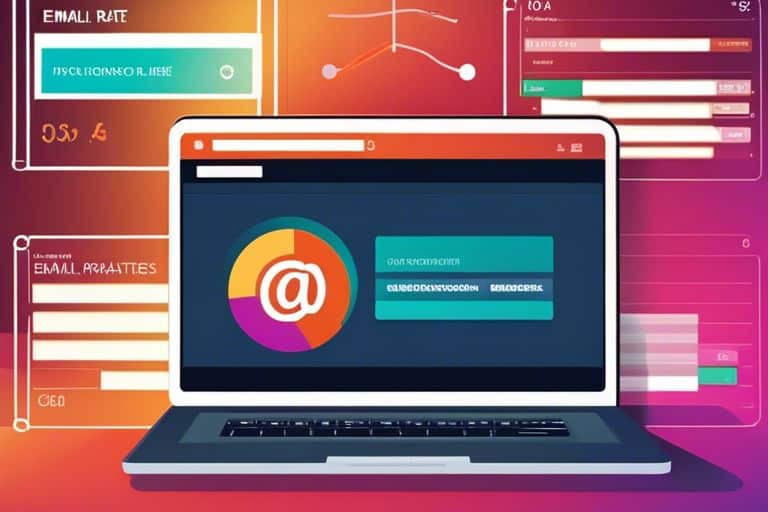Proven Techniques To Craft Attention-Grabbing Subject Lines For Emails
Oftentimes, the success of an email campaign hinges on the effectiveness of the subject line. With inboxes overflowing with messages, it’s crucial to craft subject lines that will grab the reader’s attention and entice them to open the email. If you’ve been struggling to come up with compelling subject lines, fear not- we’ve got you covered. In this how-to guide, we’ll share proven techniques to help you craft attention-grabbing subject lines for emails that will increase open rates and engagement with your audience. Whether you’re a seasoned marketer or new to email marketing, these techniques will help you stand out in a crowded inbox and make an impact with your email campaigns.
Key Takeaways:
- Understanding Your Audience: Crafting attention-grabbing subject lines for emails begins with understanding your audience’s needs, interests, and pain points.
- Personalization Is Key: Adding a personal touch to your subject lines, such as using the recipient’s name or referencing a previous interaction, can significantly increase open rates.
- Creating a Sense of Urgency: Using action-oriented language and creating a sense of urgency can motivate recipients to open your emails promptly.
1. Understand your audience’s interests and needs.
2. Use personalized and relevant language.
3. Keep subject lines concise and clear.
4. Use numbers and statistics to grab attention.
5. Create a sense of urgency or exclusivity.
6. A/B test different subject lines for effectiveness.
How-To Essentials for Crafting Powerful Subject Lines
Obviously, crafting attention-grabbing subject lines for your emails is crucial to catching your recipients’ eyes and increasing open rates. To help you master this skill, we’ve compiled a list of proven techniques and essential tips for creating powerful subject lines that will intrigue your audience and drive engagement.
For more in-depth insights, check out the 12 Tips for Creating the Best Email Subject Lines (with … blog post on Constant Contact’s website.
Understanding Your Audience
Essentials for crafting attention-grabbing subject lines include a deep understanding of your audience. By knowing their preferences, pain points, and interests, you can tailor your subject lines to resonate with them, making your emails more relevant and valuable. Take the time to analyze your audience demographics, behavior, and feedback to gain insights into what type of subject lines will capture their attention.
Knowing the Purpose of Your Email
Audience engagement hinges on the effectiveness of your subject lines, and understanding the purpose of your email is essential for crafting them. Whether your objective is to drive sales, promote content, or provide important updates, aligning your subject lines with your email’s goal is crucial. The language, tone, and urgency of your subject lines should reflect the purpose of your email, enticing recipients to open and engage with your message.
The success of your email campaigns relies heavily on the purposeful crafting of subject lines. The importance of aligning your subject lines with your emails’ objectives cannot be overstated. When crafted strategically, subject lines have the power to drive open rates, click-through rates, and ultimately, the success of your email campaigns.

Tips for Captivating Your Reader’s Interest
For a successful email campaign, captivating your reader’s interest is crucial. Without an attention-grabbing subject line, your email is more likely to be overlooked or deleted. To ensure your emails are opened and read, here are some proven techniques to captivate your reader’s interest.
Using Actionable Language
The use of actionable language in your subject lines can make a significant impact on the reader. It prompts them to take immediate action and creates a sense of urgency. Using words like “act now,” “don’t miss out,” and “limited time offer” can compel the reader to open the email and engage with the content. By using actionable language, you can create a sense of excitement and anticipation, increasing the likelihood of the reader clicking through to your email.
The Power of Personalization
One of the most effective ways to captivate your reader’s interest is through personalization. By addressing the recipient by their name or tailoring the content to their specific interests or preferences, you can create a more meaningful and engaging experience. Personalized subject lines have been proven to significantly increase open rates and click-through rates. By leveraging personalization, you can make your emails more relevant and valuable to the recipient, leading to higher levels of engagement and conversion.
Personalization creates a sense of connection and individualized attention, making the reader feel valued and understood. This can lead to greater trust and loyalty from your audience, ultimately driving better results for your email marketing efforts.
Creating a Sense of Urgency
Powerful subject lines that convey a sense of urgency can prompt the reader to take immediate action. By using words like “limited time,” “act fast,” or “last chance,” you can create a sense of urgency that motivates the reader to open the email and not miss out on an opportunity. The fear of missing out can be a powerful motivator, compelling the reader to engage with your email content sooner rather than later. This can lead to higher response rates and increased conversions for your email campaigns.
Urgency can drive immediate action and create a heightened sense of importance, prompting the reader to prioritize your email over others in their inbox.
Factors That Influence Open Rates
Now, let’s take a look at the factors that can significantly influence the open rates of your email subject lines. Understanding these factors can help you craft subject lines that are more likely to grab the recipient’s attention and compel them to open your email.
- Length of subject lines
- Clarity vs. Mystery
- Relevance to the recipient
- Personalization
- Use of urgency or curiosity
Assume that these factors play a crucial role in determining whether your email will be opened or simply ignored by the recipient.
Length of Subject Lines
On average, shorter subject lines tend to perform better in terms of open rates. However, the optimal length can vary depending on the industry and the target audience. It’s important to keep your subject lines concise and to the point, while still providing enough information to entice the recipient to open the email.
Keep in mind that mobile devices are now the primary method of reading emails, so it’s essential to ensure that your subject lines are not cut off on smaller screens. Testing different lengths and analyzing the open rates can help you determine the ideal length for your audience.
Clarity vs. Mystery
For email subject lines, a balance between clarity and mystery is crucial. While a clear and straightforward subject line can set clear expectations for the recipient, a touch of mystery can also pique their curiosity and compel them to open the email to find out more.
Lines should be clear enough to convey the purpose of the email, but also intriguing enough to spark interest. Testing different approaches and analyzing the open rates can help you identify the right balance for your audience.
How-To Incorporate Keywords Effectively
After identifying your keywords, the next step is to effectively incorporate them into your subject lines to maximize their impact and improve the chances of your email getting noticed. Incorporating keywords can significantly improve the relevance and visibility of your emails in your recipients’ inboxes.
Identifying Your Keywords
For identifying your keywords, it is crucial to understand your target audience and what they are searching for. Researching industry-specific terms and common phrases used by your audience can help you identify the most relevant keywords for your email subject lines. Tools like Google Keyword Planner, SEMrush, and Ahrefs can be valuable resources for identifying high-performing keywords that are relevant to your content and audience.
Placement Strategies for Maximum Impact
Effectively placing your keywords in the beginning of your subject line can immediately capture your recipients’ attention and improve the chances of your email being opened. Combining keywords with compelling language or specific offers can also increase the effectiveness of your subject lines. Identifying high-performing keywords and strategically placing them within your subject lines can significantly improve your email open rates and engagement levels.
Identifying relevant keywords such as “email marketing” or “digital marketing strategies” and strategically placing them in the beginning of your subject lines can help improve the visibility and relevance of your emails, ultimately increasing the likelihood of them being opened and read by your audience.
Tips for A/B Testing Your Subject Lines
Despite the importance of crafting attention-grabbing subject lines for emails, it can be challenging to determine which approach will resonate best with your audience. This is where A/B testing comes in. By testing different subject lines, you can gather valuable data and insights that will help you optimize your email marketing strategy for maximum impact.
- Start by establishing a clear objective for your A/B test. Whether it’s to increase open rates, click-through rates, or conversions, having a specific goal in mind will guide your testing process.
- Use a reliable A/B testing tool to ensure accurate and actionable results. There are several platforms available that make it easy to set up and conduct A/B tests for your email subject lines.
- Keep your test variables limited to one or two elements at a time. This will help you isolate the impact of each variation and draw meaningful conclusions from the results.
This systematic approach will enable you to refine your email subject lines based on real insights, leading to improved performance and engagement.
How to Set Up Effective A/B Tests
Tips for setting up effective A/B tests for your email subject lines include identifying specific variables to test, such as word choice, tone, length, or personalization. By isolating these elements, you can gather specific data on what resonates best with your audience. It’s also important to segment your email list for A/B testing, ensuring that you can draw accurate conclusions based on the behavior of different audience segments.
Analyzing and Interpreting Test Results
Analyzing and interpreting A/B test results involves looking at key metrics such as open rates, click-through rates, and conversion rates. By comparing the performance of different subject line variations, you can gain insights into what captures your audience’s attention and drives action. This data-driven approach will inform your decision-making process and help you refine your email subject lines for optimal impact.
The insights gained from analyzing and interpreting A/B test results will allow you to make informed decisions about your email subject lines, leading to improved engagement and conversions. By leveraging data and testing, you can continually optimize your email marketing strategy for greater effectiveness.
How-To Avoid Common Pitfalls
Not every email subject line is created equal, and there are some common pitfalls that can detract from the effectiveness of your email marketing efforts. By understanding and steering clear of these pitfalls, you can craft attention-grabbing subject lines that resonate with your audience.
Steering Clear of Spam Triggers
To ensure that your emails reach your audience’s inboxes, it’s crucial to avoid using language or tactics that could trigger spam filters. Words and phrases such as “free,” “buy now,” and “limited time offer” can raise red flags with email providers and decrease the likelihood of your email being delivered. By being mindful of these triggers and crafting subject lines that prioritize value and relevance over gimmicky sales tactics, you can increase the chances of your emails reaching your subscribers’ inboxes.
Additionally, incorporating personalization and targeting specific segments of your audience can help improve email deliverability and engagement. By focusing on providing valuable content and addressing the needs and interests of your subscribers, you can build trust and credibility, ultimately leading to higher open and click-through rates.
Avoiding Overuse of Salesy Language
Salesy language can come across as pushy and insincere, turning off potential readers and leading to higher unsubscribe rates. This includes using excessive exclamation points, all caps, and overly promotional language in your subject lines. This approach can detract from your message and may not accurately reflect the value of your content. Instead, focus on using language that resonates with your audience and accurately represents the content within your emails. By striking a balance between persuasive and genuine language, you can capture your readers’ attention while maintaining trust and authenticity.
This approach can lead to better engagement and conversion rates, as your audience will be more receptive to your emails and the offers or information you are presenting. By steering clear of overly salesy language and prioritizing the value of your content, you can build a stronger connection with your subscribers and establish your brand as a trusted source of valuable content.

Proven Techniques To Craft Attention-Grabbing Subject Lines For Emails
Upon reflecting on the various techniques and strategies outlined in this article for crafting attention-grabbing subject lines for emails, it becomes clear that a well-crafted subject line can greatly impact the success of an email marketing campaign. By incorporating elements such as personalization, urgency, and curiosity, marketers can capture the attention of their audience and increase the likelihood of their emails being opened and engaged with.
It is essential for marketers to continually test and optimize their subject lines to understand what resonates with their audience and drives the desired actions. By leveraging these proven techniques and staying abreast of evolving trends in email marketing, marketers can consistently craft subject lines that stand out in crowded inboxes and drive meaningful results for their campaigns. Ultimately, the ability to create attention-grabbing subject lines is a valuable skill that can significantly enhance the effectiveness of email marketing efforts.
FAQ
Q: Why are attention-grabbing subject lines important for email marketing?
A: Attention-grabbing subject lines are crucial for email marketing as they are the first thing recipients see and can determine whether they open the email or ignore it. A well-crafted subject line can significantly increase open rates and overall engagement with your emails.
Q: What are some proven techniques for crafting attention-grabbing subject lines?
A: Some proven techniques for crafting attention-grabbing subject lines include using personalization, creating a sense of urgency, asking a compelling question, offering value or solving a problem, and using power words that evoke emotion or curiosity.
Q: How can I personalize subject lines to make them more attention-grabbing?
A: Personalizing subject lines can be done by using the recipient’s name, referencing their previous interactions with your brand, or tailoring the subject line to their specific interests or preferences. Personalization can make the email feel more relevant and increase the likelihood of it being opened.
Q: Are there any best practices to follow when crafting attention-grabbing subject lines?
A: Yes, some best practices for crafting attention-grabbing subject lines include keeping them short and concise, avoiding spammy or clickbait language, testing different subject lines to see what resonates with your audience, and being honest and authentic in your messaging.
Q: How can I measure the effectiveness of my attention-grabbing subject lines?
A: You can measure the effectiveness of your attention-grabbing subject lines by tracking open rates, click-through rates, and overall engagement with your emails. A/B testing different subject lines and analyzing the results can also provide valuable insights into what resonates with your audience.







